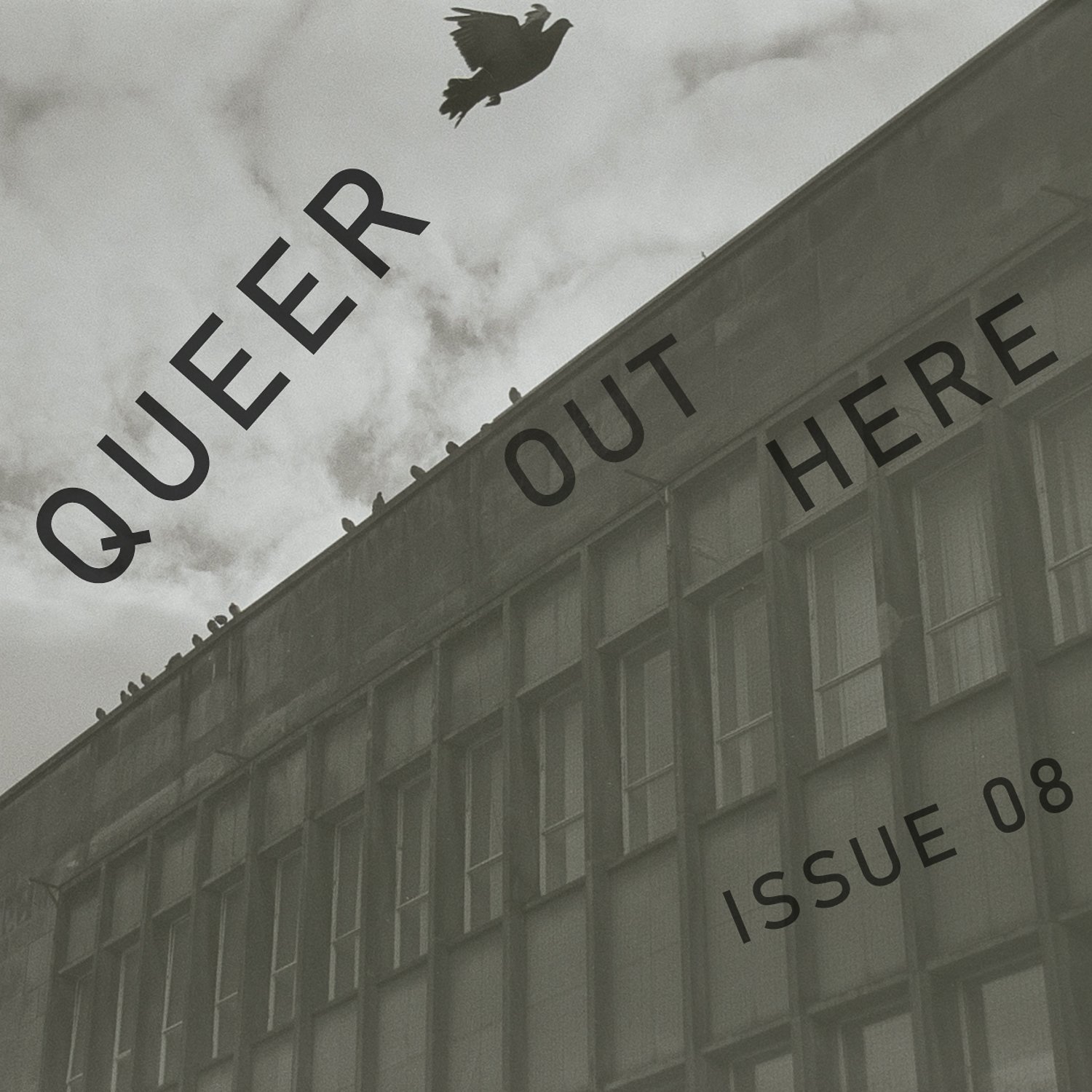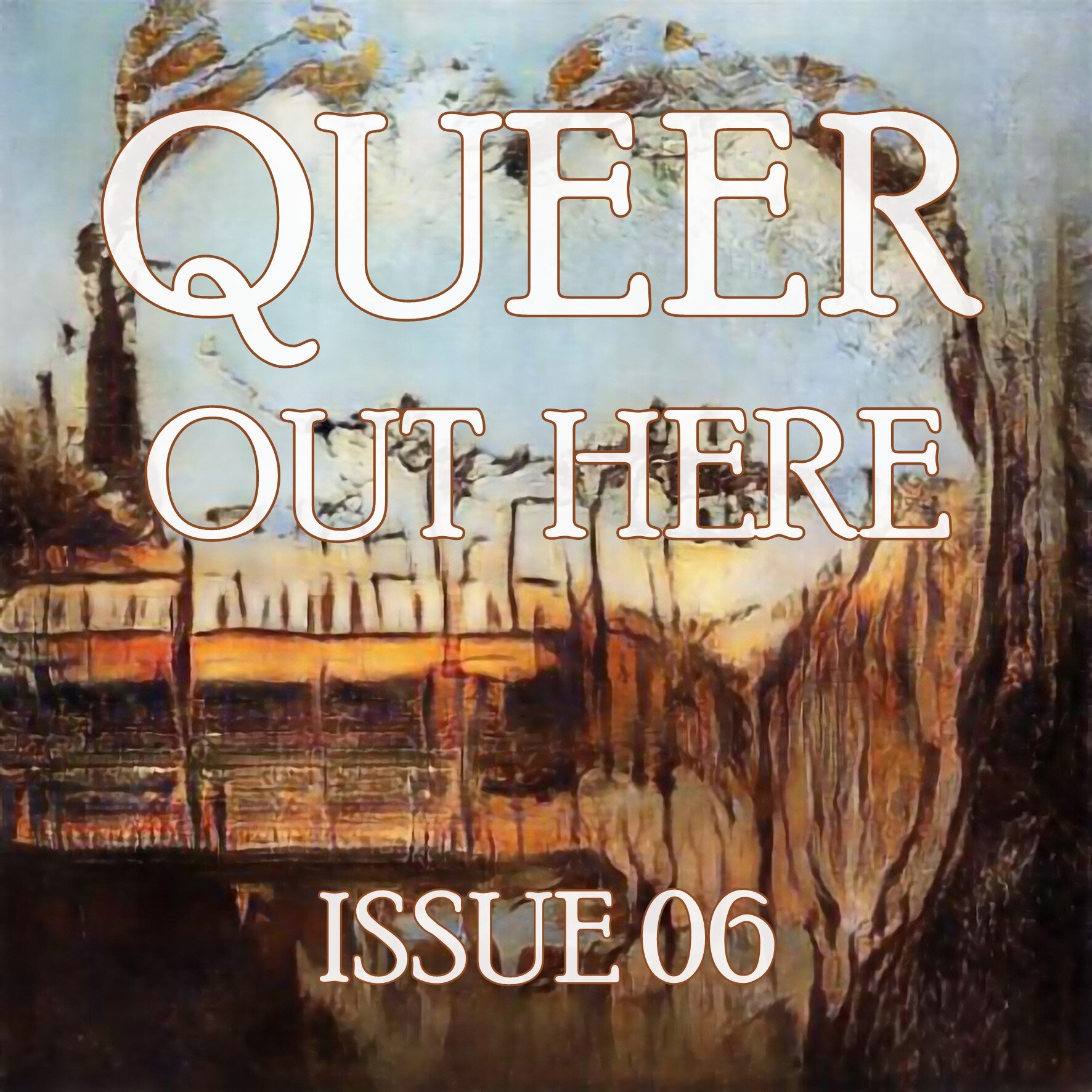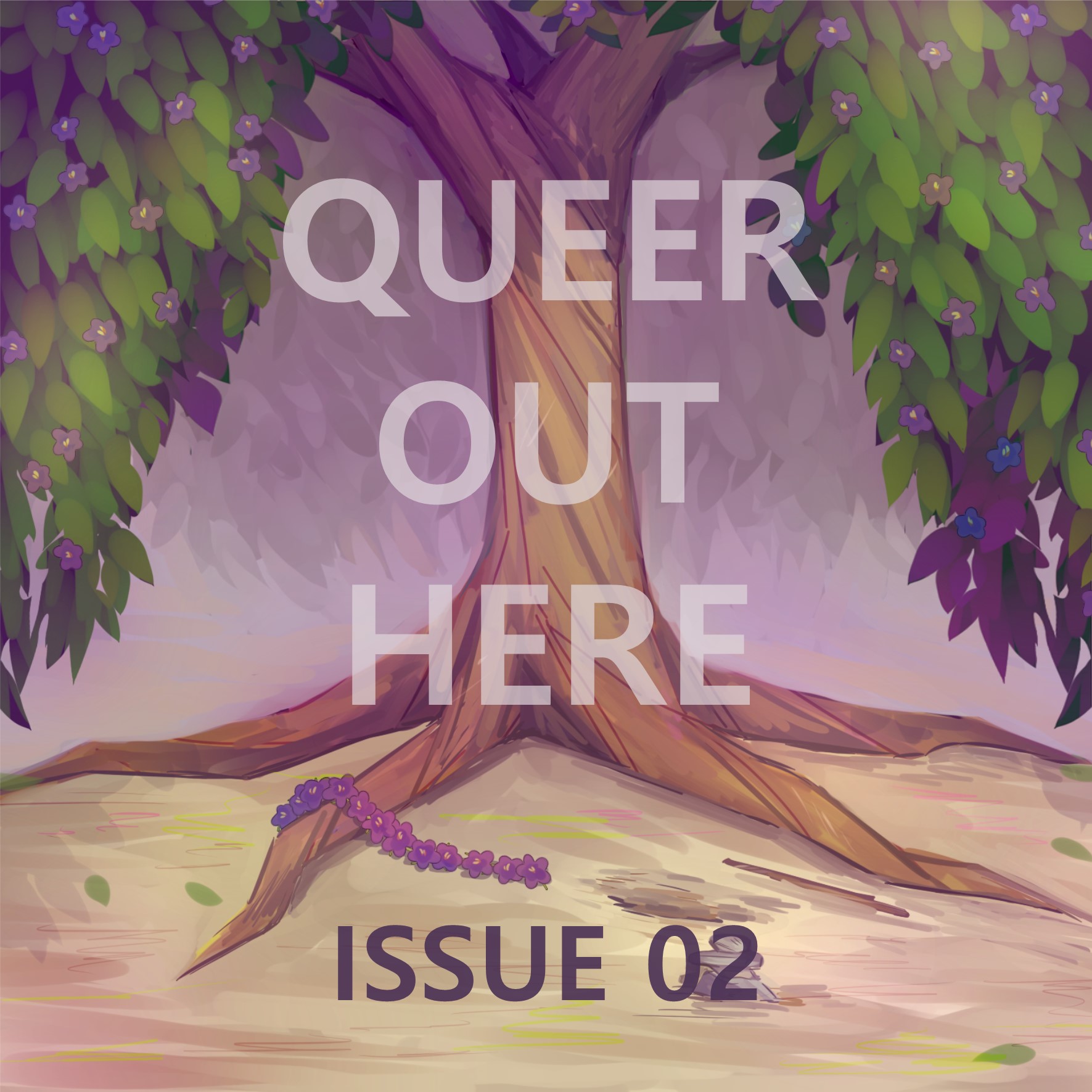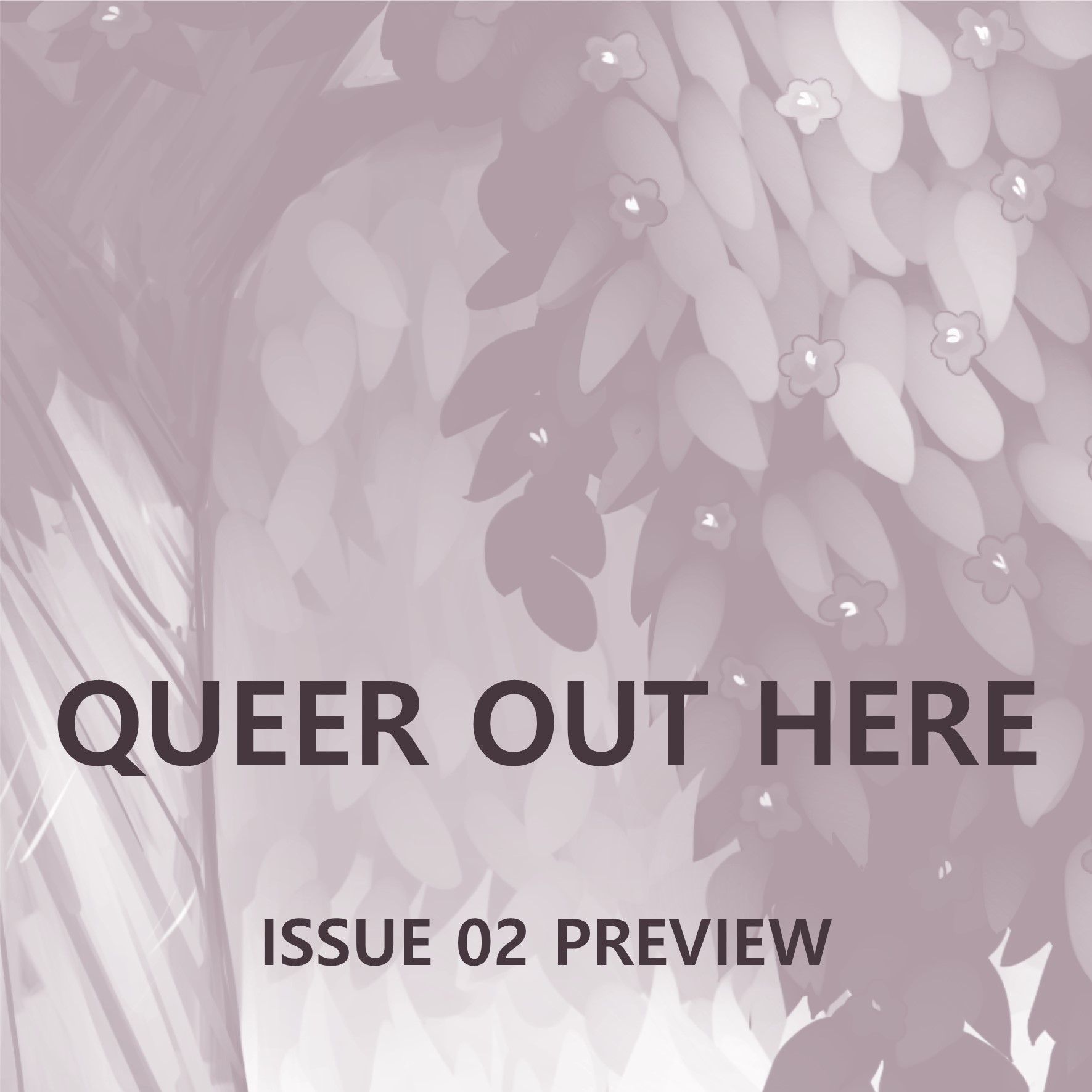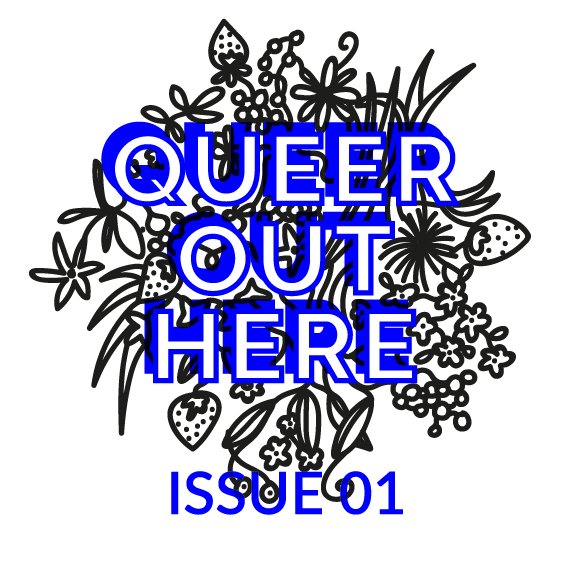Information about Issue 06
Length: 1:25:26
Transcript: Google Docs / PDF
High quality audio version: Google Drive (.wav file 1.26GB)
Content notes: The pieces in Queer Out Here talk about many things related to being queer and the outdoors. This issue contains: non-graphic references to racism and racist violence; non-graphic references to queerphobic, transphobic, transmisogynist violence; discussions of mental health issues including depression; swearing; wind distortion in a few pieces (Skye’s and Jade’s pieces in particular); mentions of unhappy relationships; discussion of fishing (no mention of animal harm); a colloquialism that has ableist connotations (“drives me insane”); a non-graphic reference to vomit (“threw up in my mouth”). If you have specific anxieties or triggers, check the transcript (linked above) or ask a trusted friend to listen and give you feedback. If there is something else you feel we should mention here, please let us know.
Running order:
So Much For - Berrak Nil Boya
Surf Fishing, Soul Searching Journey - Moxy
Lockdown Litter Picking - Mags
Excerpt from Breaking Green Ceilings - Isaias Hernandez and Sapna Mulki
Field Recordings - Emily
Back on Country - Skye Stewart
GEILT (a number of ways) - Rufus Isabel Elliot
My Science Journey: Black Botanist Week - Itumeleng Moroenyane
Thou Shalt Not Compare Queer People To Insects - Connor Butler
How Are You? - Jade Mutyora
The Stick - Martha Casey and Jonathan
Sounds of Ice Swimming - Corrie
Desire Lines - Ariana Martinez
Cover art: Our cover art is a piece titled “Self Portrait with Reflective Landscape” by Melbourne-based AI artist and researcher J Rosenbaum. J works with 3D modeling, artificial intelligence and extended reality technologies, exploring posthuman and postgender concepts using classical art combined with new media techniques and programming. J says:
This work is a collaborative piece drawn with a landscape producing AI. I drew a self portrait and the neural network rendered my sketch in with the landscape format in baroque styles. It weaves the lines in with what it understands of landscape elements to integrate the two. As a landscape AI it is not trained to handle faces, so the facial elements become tree-like, part of the sky, a reflection in the water. I walk a lot, my primary physical therapy is walking and I walk around parks and nature reserves as much as possible. This work shows some of the elements of my favourite park, with trees and a lake and observation points. It feels like part of me. A world where I can breathe and be part of nature, I can disconnect and recharge. Working with those elements in AI gives me a moment of calm in a world of chaos. AI is difficult to control, like nature you have to work with it, not against it.
J is a PhD candidate at RMIT University in Melbourne at the School of Art Computer Perceptions of Gender and the nature of AI generated art and the human hands behind the processes that engender bias, especially towards gender minorities. Their artwork highlights this bias through programmatic interactive artworks and traditional gallery displays. They speak at conferences worldwide about the use of artificial intelligence in art and have exhibited all over the world. J’s artwork has been supported by the City of Melbourne Covid-19 Arts Grants and has won the Midsumma Australia Post Art Prize.
Find J online at their website, on Instagram, on Facebook and on Twitter.






